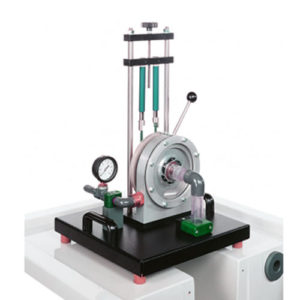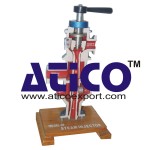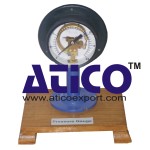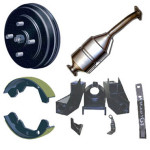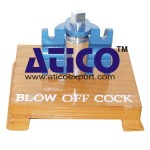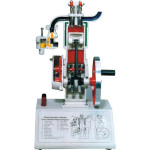Water turbines are turbomachines utilising water power. The Francis turbine is a type of reaction turbine which converts the pressure energy of the water into kinetic energy in the distributor and in the rotor. The water is fed in the distributor by means of a spiral housing. The flowing water is accelerated in the distributor by the adjustable guide vanes and directed onto the blades. The redirection and further acceleration of the water in the rotor generates an impulse which is transmitted to the rotor.
It is the model of a Francis turbine demonstrating the function of a reaction turbine.
The experimental unit consists of the rotor, the distributor with adjustable guide vanes, a band brake for loading the turbine and a housing with a transparent front panel. The transparent cover enables to observe the water flow, the rotor and the guide vanes during operation. The angle of attack and thus the power of the rotor are modified by adjusting the guide vanes.
Learning Objectives/Experiments
- Design and function of a Francis turbine
- Determination of torque, power and efficiency
- Graphical representation of characteristic curves for torque, power and efficiency
Specification
- Function of a Francis turbine
- Transparent front panel for observing the operating area
- Loading the turbine by use of the band brake
- Adjustable guide vanes for setting different angles of attack
- Marking on brake drum for non-contact speed measurement
- Instruments: spring balances for determining the torque, manometer shows pressure at turbine inlet
- Flow determination by base module
- Water supply using the base module or via lab supply
Technical Data
- Turbine
- output: 12W at n=1100min-1, approx. 40L/min, H=8m
- rotor
- 7 blades
- blade width: 5mm
- external Ø: 50mm
- guide vanes
- 6 vanes, adjustable (20 stages)
- Measuring ranges
- force: 2x 0…10N
- pressure: 0…1,0bar

